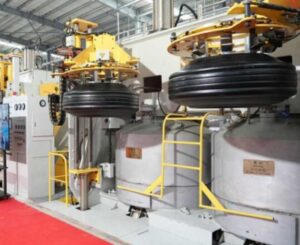Italian rubber machinery manufacturers report 20-point drop in orders for first half of 2024
Milan, Italy – According to analyses by the Mecs Study Centre of the trade association Amaplast, after positive consolidated year-end results for both imports and exports in 2023, imports were consistently lower in the early months of 2024 with respect to the same period a year earlier, with drops entering into the double digits in the second quarter. This is a symptom of lower propensity to invest within a context of contraction in the economy generally and in the industrial sector specifically. The period closed with a drop of 12 percentage points to a value of 483 million euros, with imports noticeably declining from all three main source countries: Germany, China, Austria.
The first half of 2024 closed with exports still in the positive range (+2.5% at 1.73 billion euros) but on a diminishing trend because of lower demand for a number of different types of machinery – including some making up a large share of the total – and molds.
Exports to Germany – historical main partner of Italian manufacturers, currently grappling with an unfavourable economy and a complicated political situation – have been rather lacklustre while those to the United States (second largest destination market), while remaining high in recent years, have slowed somewhat.
Remaining within the realm of the top ten destination markets, we find diametrically opposite trends. Exports to the EU countries in this group – Spain, Poland, France – have dropped by 13% and 32% and remained substantially stable, respectively. Meanwhile, double-digit growth is recorded for a number of extra-EU markets: +26% for Mexico; +36% for China; +50% for Turkey; +22% for India; and +24% for the United Kingdom.
Looking at the principal macro areas, on average exports show significant growth towards the Far East, North America (excluding the United States), extra-EU Europe, and Sub-Saharan Africa.
The above-mentioned slump in trade between Italy and Germany is confirmed by the most recent data (January-July 2024) published by the local plastics and rubber machinery manufacturers association (VDMA), showing a 20-point drop in orders and a 9-point drop in revenues: in both cases the domestic market has suffered much more than sales abroad.
Italian companies thus express a certain amount of concern for the performance of their industry and are very cautious in expressing expectations for the coming months in light of the negative trend in macroeconomic indicators, turbulence in the markets, and contingencies that can affect the entire industrial sector, in particular those relating to progress towards energy transition. Going beyond the statistics, orders are still showing a negative trend, but with differences, some quite large, among the different technologies. After a particularly negative first quarter, some faint signs of recovery were noted in subsequent months.
In parallel, the positive Istat export data still reflect orders for complex systems, with delivery times of 6–9 months or more, registered towards the end of the previous year.
In this situation, it is reasonable to expect the consolidated year-end results to show a contraction in revenues with respect to 2023.

